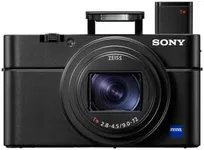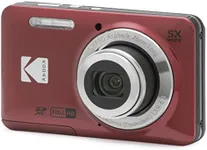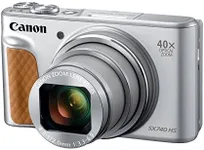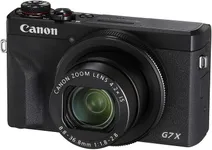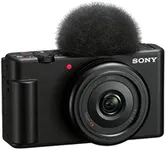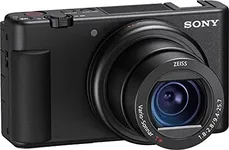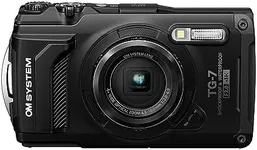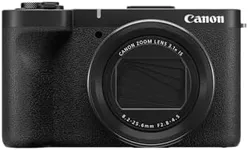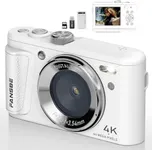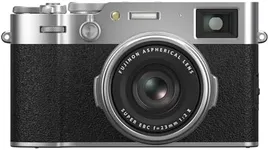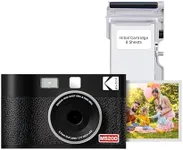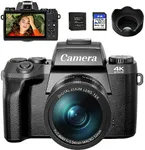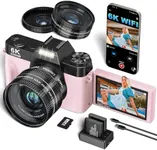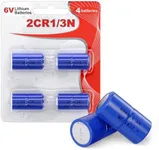Buying Guide for the Best Compact Digital Cameras
Choosing a compact digital camera can be a fun yet sometimes confusing experience because there are many options and features to consider. The main goal is to find a camera that balances image quality, portability, and ease of use, all while matching your photography habits. It's helpful to think about when, where, and how you plan to use your camera—for everyday snaps, travel, or special events. Being clear about your needs will make picking the right features much easier.Sensor SizeSensor size refers to the physical dimensions of the part of the camera that captures light and creates the photo. A larger sensor generally means better image quality, especially in low light, and more background blur, but it can also make the camera a bit bulkier. Compact cameras usually have small sensors for portability. If photo quality is your top priority, look for models with the largest sensor you can find in a compact camera. If portability and pocketability matter most, a smaller sensor model will still give good results for casual photos.
MegapixelsMegapixels describe how many tiny dots make up each photo, which mainly affects how large you can print your pictures or how much you can crop them. Most modern compact cameras offer enough megapixels for regular prints and online sharing. Higher megapixels might seem better, but after about 12-20MP, the difference is usually only noticeable if you plan to crop heavily or print very large pictures. Choose according to your needs—enough for everyday shots is typically enough for most users.
Optical ZoomOptical zoom tells you how much closer you can get to your subject without losing picture quality, as opposed to digital zoom, which just crops and can make images look blurry. Compact cameras usually offer a range from no zoom up to long zoom lenses. If you like taking travel photos, wildlife, or distant subjects, go for a higher optical zoom. For close-up or everyday shots, a lower zoom is fine and makes the camera smaller.
Image StabilizationImage stabilization reduces blurry photos caused by shaky hands, especially in low light or when using zoom. Some cameras have optical stabilization, which physically adjusts the lens or sensor; others use digital tricks. For clearer photos, look for optical stabilization if you often shoot indoors or zoom in a lot. If you mostly shoot in bright light or hold the camera steady, this may be less critical.
Lens ApertureThe lens aperture, shown as an f-number, tells you how much light the camera lets in. A lower number (like f/1.8) means more light, so you can get sharper, brighter photos in dim conditions and more background blur. A higher number (like f/3.5) means less light, which is fine for bright, outdoor use. If you plan to take a lot of low-light or indoor photos, or want artistic blurry backgrounds, look for a camera with a wider (lower f-number) maximum aperture.
Size and WeightSince you're looking at compact cameras, portability is key. Some models truly fit in your pocket, while others need a small bag. Think about how you'll carry your camera—do you want it always with you, or just for trips and events? Lighter and smaller models are easier to bring everywhere, but may offer fewer manual controls or features.
Screen and ViewfinderMost compact cameras use an LCD screen for framing shots. Screen size and brightness can affect how easy it is to compose your pictures, especially outdoors. Some also have a built-in electronic viewfinder, which is helpful in bright sunlight. If you often shoot outdoors or want to save battery, consider a camera with a viewfinder. Otherwise, a good-sized, clear screen is enough for most users.
Ease of Use and ControlsSome compact cameras are designed for quick, automatic shooting with few buttons, while others let you adjust things like shutter speed or focus. If you prefer simplicity, look for cameras with a clear menu and helpful automatic modes. If you want to learn more about photography or experiment, look for manual controls and custom settings.
Battery LifeBattery life tells you how many photos you can take before needing to recharge. For travel or all-day events, a camera with longer battery life is handy, so you won’t miss important moments. If you usually take just a few photos at a time, battery life is less critical, but it's still good to check so you’re not caught out.
Wireless ConnectivityMany compact cameras now offer Wi-Fi or Bluetooth, making it easy to transfer photos to your phone or share them online. If you like posting pictures quickly or want to back up your shots without cables, wireless features can be a big plus. If sharing instantly isn’t vital to you, this is less important.
